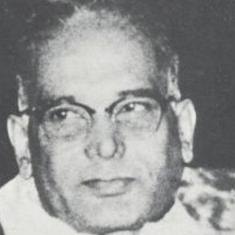With ten minutes to go, Japan were facing defeat that would in turn throw Group H wide open. Their most experienced player Keisuke Honda found the net, and the Blue Samurai, for the second time in the game had equalised.
While it was street-smart football that earned them a win against
Colombia, powers of resilience to earn a point despite the contest at times turning into a physical mismatch came to the fore while facing Senegal.
This was never the plan. Before a ball was kicked in this World Cup, Japan were the whipping-boys elect. While the European and South American outfit were technically superior, Senegal had size and strength. Japan were written off as a waning force in Asia, leave alone world football.
Wretched form on the pitch was compounded with a series of other distractions: A change of coach just months before the tournament, discontent among senior players, injuries, and an earthquake that affected many lives back home.
Akira Nishino, a veteran in the Japanese game, and his side had other ideas. Now, with four points from two games, they stand on the brink of qualification. They can still fail to progress to the knockout stages, but that is a worry that can wait for June 28.
Another slow start
If there is one chink in their armour that could come back and haunt them, it is needlessly inviting pressure early on. Colombia nearly made them pay despite going down to ten men in their group opener. Here again, trouble arrived at their doorstep with their defenders sitting deep, and allowing M’Baye Niang, Sadio Mane and Co to use their pace to good effect.
They were fortunate that the Senegalese captain, despite scoring off a deflection, had a modest outing by his standards. It was all Senegal for the first half hour of the game. Japan needed inspiration and it arrived through midfielder Takashi Inui’s gorgeous curler in to the top corner.
The Asians breathed life in the game when it looked like it was getting away from their grasp.
#JPN have made their joint-best start to a #WorldCup campaign with four points from their first two games.
— Squawka Football (@Squawka) June 24, 2018
Never before have they scored four goals from their first two games of a tournament. 🎌 pic.twitter.com/OMhddURWMU
The familiar resurgence
Makoto Hasebe and his teammate clearly relish pressure.
They sat back and soaked the pressure against Colombia in the opening match despite the opponents being reduced to 10 men. The Colombians, who were chasing down the ball relentlessly in the first half, faded away in the second. This was largely down to Japan recycling the ball better, and showing more courage.
Once again, revisiting their tactics at half-time and using their strengths to good effect worked remarkably for them against Tunisia. In Inui, Shinji Kagawa and Genki Haraguchi, the men in blue had the personnel to run the midfield.
And the Japanese went on to enjoy an inspired spell on the ball. Honda coming on from the bench and subsequently making history to become the highest scoring Asian in World Cups sent his country into collective delirium.
Sadly, though, there was a lingering aftertaste of what might have been. More so, after striker Yuya Osako missed a sitter from point-blank range where all that was needed was a feather-touch.
Inui could have also put his side in the lead but his curler, this time, could only clip the cross bar. Japan rallied, battled and put their bodies on the line. Their spirit was epitomised by skipper Hasebe soldiering on despite suffering a nasty blow to his face after Niang’s hand clipped him inadvertently.
By drawing the game, Japan matched their best start to a World Cup campaign. This, after former coach Phillipe Troussier had said, “Even Jose Mourinho or Arsene Wenger can’t help them.”
Taking into account how poor Poland – tipped to be the group-toppers by many – were in their two games, reaching the last-16 or even bettering their best World cup finish remains a realistic dream.










